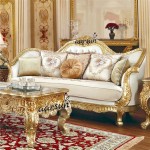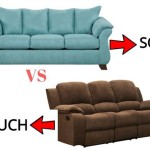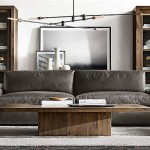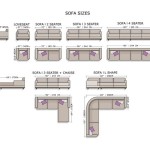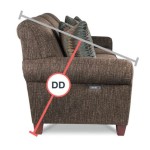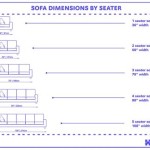What to Pair With a Chesterfield Sofa
The Chesterfield sofa, an icon of timeless design, is characterized by its rolled arms, deep button tufting, and often, a low seat. Its distinct silhouette evokes a sense of sophistication and tradition, making it a focal point in any room. Understanding what to pair with this statement piece is crucial to creating a cohesive and aesthetically pleasing interior. Considerations should extend beyond mere appearance, encompassing functionality, scale, and the overall atmosphere desired.
The inherent versatility of the Chesterfield allows it to be integrated into a variety of design styles, from classic and traditional to contemporary and eclectic. However, its strong personality also necessitates careful consideration of the surrounding elements. The right pairings can enhance the Chesterfield's charm, while the wrong ones can create a discordant and unbalanced space. Factors such as color palette, texture, material, and the intended use of the room all play a vital role in determining the optimal companions for this distinguished sofa.
Understanding the Chesterfield's Style Influence
Before delving into specific pairings, it's important to analyze the inherent style influence of the Chesterfield. While traditionally associated with Victorian and Edwardian interiors, its clean lines and robust form can also be adapted to more modern settings. A Chesterfield upholstered in dark leather conveys a more formal and masculine aesthetic, suitable for a library or study. Conversely, a Chesterfield in a lighter-colored velvet or linen presents a more relaxed and feminine appeal, ideal for a living room or bedroom.
The tufting itself is a key element to consider. Deep button tufting contributes to a sense of formality and richness, while a less pronounced tufting pattern can create a more streamlined and contemporary look. The material used for the upholstery significantly impacts the overall style. Leather, velvet, linen, and even patterned fabrics can dramatically alter the Chesterfield's character and, consequently, the appropriate pairings.
The surrounding architecture also plays a role. A Chesterfield placed in a room with ornate moldings and high ceilings will naturally lend itself to a more traditional style. In contrast, a Chesterfield situated in a minimalist loft space will require pairings that emphasize clean lines and modern design principles.
Furniture and Décor Pairings
Selecting the right furniture and décor to complement a Chesterfield sofa requires a nuanced approach, considering both functional and aesthetic considerations.
Coffee Tables: The choice of coffee table is paramount. A solid wood coffee table with carved details complements a traditional Chesterfield, reinforcing its classic appeal. In a more modern setting, a coffee table with clean lines, such as a glass or metal design, provides a striking contrast. The height of the coffee table should be proportional to the sofa's seat height, typically a few inches lower. The shape should also be considered; a rectangular coffee table is well-suited for longer Chesterfield sofas, while a round or oval table can soften the angularity of the piece.
Side Tables: Side tables provide both functionality and style. A pair of matching side tables flanking the sofa creates symmetry and balance. These tables can be used to display lamps, books, or decorative objects. The material and style of the side tables should align with the overall aesthetic of the room. For example, a Chesterfield in a room with brass accents could be paired with side tables featuring brass hardware or inlays.
Armchairs: Armchairs offer additional seating and visual interest. When selecting armchairs, consider the fabric, shape, and scale. Armchairs upholstered in a complementary fabric, but not a matching one, can add depth and texture to the room. Contrasting textures, such as pairing a leather Chesterfield with a velvet armchair, can create a visually engaging juxtaposition. The scale of the armchairs should be proportional to the sofa, avoiding pieces that are either too large or too small.
Rugs: The rug serves as an anchor for the seating area, defining the space and adding warmth and texture. A traditional Persian or Oriental rug complements a classic Chesterfield, enhancing its luxurious feel. In a more contemporary setting, a rug with a geometric pattern or a solid color can provide a striking contrast. The size of the rug should be large enough to accommodate all the front legs of the sofa and armchairs, creating a unified and cohesive space.
Lighting: Lighting plays a crucial role in setting the mood and highlighting the Chesterfield's features. A floor lamp placed behind the sofa provides ambient lighting and adds height to the room. Table lamps on side tables offer task lighting and create a cozy atmosphere. The style of the lamps should complement the overall design. For example, a Chesterfield in a traditional room could be paired with brass or ceramic lamps, while a Chesterfield in a modern room could be paired with metal or glass lamps.
Accessories: Accessories, such as cushions, throws, and artwork, add personality and character to the room. Cushions in complementary colors and patterns can enhance the sofa's aesthetic. A throw blanket draped over the back of the sofa adds warmth and texture. Artwork on the walls should be chosen to complement the style of the room and the Chesterfield's aesthetic. Consider the color palette, subject matter, and framing of the artwork.
Color Palettes and Textural Considerations
The color palette is a fundamental aspect of interior design, influencing the overall mood and visual harmony of the space. When pairing a Chesterfield sofa with other elements, carefully consider the color relationships.
Monochromatic Palettes: A monochromatic palette utilizes variations of a single color. This approach creates a sense of calm and sophistication, allowing the Chesterfield's texture and form to take center stage. For example, a grey Chesterfield can be paired with lighter and darker shades of grey in the surrounding décor, creating a subtle and elegant look.
Complementary Color Palettes: Complementary colors are those that sit opposite each other on the color wheel, such as blue and orange or red and green. Pairing a Chesterfield with its complementary color can create a vibrant and dynamic space. However, it's important to use complementary colors in moderation, as too much contrast can be overwhelming. Consider using one color as the dominant hue and the other as an accent color.
Analogous Color Palettes: Analogous colors are those that are adjacent to each other on the color wheel, such as blue, blue-green, and green. This approach creates a harmonious and soothing atmosphere. An analogous color palette can be particularly effective in a bedroom or living room, promoting relaxation and tranquility.
Textural Contrast: Textural contrast adds depth and interest to a space. Pairing a Chesterfield sofa with elements that have different textures can create a visually engaging and tactile experience. For example, a leather Chesterfield can be paired with a soft velvet armchair, a woven rug, and a smooth glass coffee table. The juxtaposition of these textures adds complexity and richness to the room.
Material Harmony: While textural contrast is important, it's also essential to consider material harmony. Choose materials that complement each other in terms of style and quality. For example, a Chesterfield with brass nailhead trim can be paired with brass accents in the lighting and accessories. A Chesterfield upholstered in linen can be paired with natural wood furniture and organic textiles.
Balancing Warm and Cool Tones: Warm colors, such as red, orange, and yellow, create a sense of warmth and energy. Cool colors, such as blue, green, and purple, create a sense of calm and tranquility. Balancing warm and cool tones is essential for creating a harmonious and balanced space. A Chesterfield in a warm color can be balanced with cool-toned accessories and artwork, and vice versa.
Ultimately, the key to successfully pairing elements with a Chesterfield sofa lies in understanding its inherent style, considering the overall aesthetic desired, and carefully selecting furniture, décor, and color palettes that complement its unique character. The goal is to create a space that is both visually appealing and functionally comfortable, where the Chesterfield sofa serves as a focal point that enhances the overall design.

8 Ways To Style The Chesterfield Sofa Inspiration Furniture And Choice

8 Ways To Style The Chesterfield Sofa Inspiration Furniture And Choice

Pin On Chairs To Go With Chesterfield Sofa

25 Ways To Integrate A Chesterfield Sofa Into Your Interior Digsdigs

Decorating 10 Ways To Work An Iconic Chesterfield Sofa Into Your Home Houzz Ie

A Refined Neutral Living Room With Fireplace Grey Chesterfield Sofas C Velvet Sofa Decor Gray

Trend Alert The Modern Chesterfield Sofa

8 Ways To Style The Chesterfield Sofa Inspiration Furniture And Choice
Guide To A Chesterfield Sofa Dfs

8 Ways To Style The Chesterfield Sofa Inspiration Furniture And Choice


